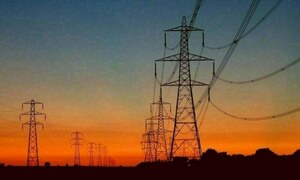Face masks available to consumers in China for protection against air pollution vary widely in their real-world performance, suggests a recent study. Although a mask may filter tiny particles as advertised, face size and shape as well as movement can lead to leakage as high as 68 percent, researchers report in Occupational & Environmental Medicine.
"Even if the filtration efficiency of the mask is high, and the mask fits the person initially, the mask may not continue to give a good fit as the person goes about their daily activities - walking, talking, and more," said senior study author Miranda Loh, an exposure and environmental scientist at the Institute of Occupational Medicine in Edinburgh, Scotland. "It is important for people to understand that not all masks are effective at reducing exposure to particles in air pollution," Loh said in an email. "And none of these masks reduced the concentration of pollution gases such as nitrogen dioxide."
Although masks sold for workplace use generally must meet rigorous standards, there are few controls on masks marketed to consumers and little information on which mask will offer the best protection, the study team writes.
Their assessment of a sampling of masks in Beijing is part of a larger project funded by the Research Councils UK, examining air pollution in the Chinese capital and its health effects. Air pollution causes an estimated 1.6 million premature deaths in China each year, the study team notes.
At consumer outlets in Beijing, Loh and colleagues purchased nine different mask types that claimed to protect against fine particle pollution known as PM2.5, which includes soot, droplets and other particles smaller than 2.5 microns in diameter.
These tiny particles are components of vehicle exhaust and industrial emissions and can penetrate deep into the lungs, and from there, enter the bloodstream. Researchers first tested each mask's filtration efficiency by drawing airborne diesel exhaust through a section of the material for 30 minutes and measuring the particulate matter and black carbon concentrations on both sides. They also tested four masks on 10 volunteers who were exposed to diesel exhaust in a lab while performing tasks such as talking, sitting, standing, bending over and walking in place.
BR100
11,697
Decreased By
-168.8 (-1.42%)
BR30
35,252
Decreased By
-445.3 (-1.25%)
KSE100
112,638
Decreased By
-1510.2 (-1.32%)
KSE30
35,458
Decreased By
-494 (-1.37%)

























Comments
Comments are closed.